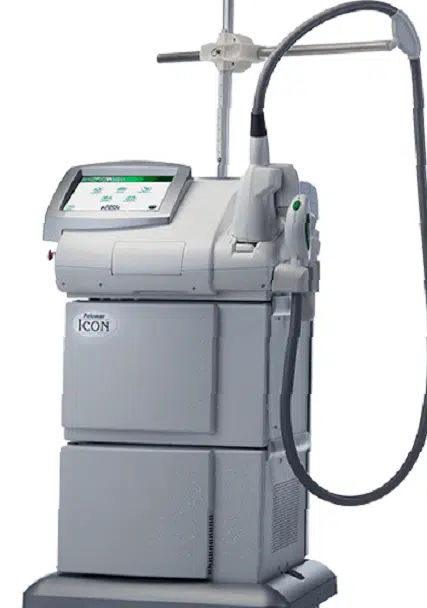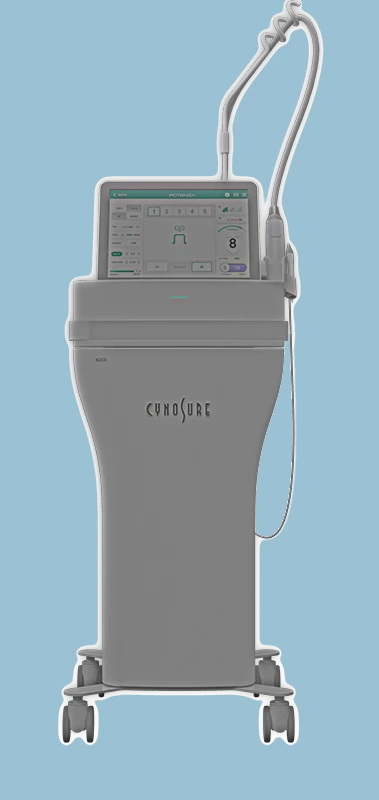The field of aesthetics has witnessed significant advancements in recent years, with a wide array of energy-based treatments emerging as popular choices for individuals seeking to enhance their appearance. These treatments utilize various forms of energy to address an array of aesthetic concerns, from skin rejuvenation to hair removal. For professionals in aesthetics, a comprehensive understanding of these energy-based treatments, including their wavelengths, frequencies, and energy types, is essential.
The Fundamental Principles of Energy-Based Treatments
Energy-based treatments in cosmetic treatments harness the power of various energy sources to improve the skin’s texture, tone, and overall appearance. The primary energy types used in these treatments include:
1.Laser Energy
Laser, short for “light amplification by stimulated emission of radiation,” is one of the most commonly employed energy sources in aesthetics. Aesthetic laser devices emit coherent and focused light at specific wavelengths. These wavelengths are selected based on their ability to target specific chromophores in the skin, such as melanin or hemoglobin.

Lasers are categorized into various types, each offering distinct benefits for cosmetic treatments. Some of the most prevalent laser types used in the U.S. include:
A. Ablative Lasers
Ablative lasers, like CO2 and erbium lasers, work by vaporizing the top layers of the skin. They are effective for treating deep wrinkles, scars, and skin irregularities. The high energy of ablative lasers triggers a controlled injury response in the skin, leading to collagen remodeling and skin tightening.
B. Non-Ablative Lasers
Non-ablative lasers, including fractional lasers, work without causing significant damage to the skin’s surface. They stimulate collagen production and are ideal for addressing mild to moderate signs of aging, sun damage, and acne scars.
C. Intense Pulsed Light (IPL)
While not technically a laser, IPL devices use a broad spectrum of light with multiple wavelengths to target various skin conditions. IPL is excellent for treating hyperpigmentation, vascular lesions, and improving overall skin tone.
2. Radiofrequency (RF) Energy
Radiofrequency energy treatments employ electromagnetic waves to heat the deep layers of the skin. This controlled thermal injury triggers collagen production, leading to skin tightening and wrinkle reduction. RF energy treatments are non-invasive and come in two forms:
A. Monopolar RF
Monopolar RF devices use a single electrode to deliver energy deep into the skin. These treatments are ideal for skin tightening and body contouring, making them popular in the field of non-surgical facelifts and body sculpting.

B. Bipolar and Multipolar RF
Bipolar and multipolar RF devices use two or more electrodes to create a controlled circuit within the skin. These treatments are effective for skin tightening, cellulite reduction, and body contouring.
3. Ultrasound Energy
Ultrasound energy treatments rely on high-frequency sound waves to penetrate the deep layers of the skin. This energy type is popular for non-surgical skin tightening and lifting. Two main types of ultrasound energy treatments are:
A. HIFU (High-Intensity Focused Ultrasound)
HIFU devices focus ultrasound energy at precise depths, targeting the superficial muscular aponeurotic system (SMAS) layer of the skin. This results in a lifted and tightened appearance. HIFU is often used for non-surgical facelifts.
B. Microfocused Ultrasound (MFU)
Microfocused ultrasound treatments deliver energy in smaller, more precise beams, making them suitable for treating fine lines and wrinkles with minimal downtime.
4. Cryolipolysis
Cryolipolysis, commonly known as “cool sculpting,” uses controlled cooling to freeze and eliminate stubborn fat cells. This non-invasive procedure is popular for body contouring and can be used on various body areas.
5. Diode Laser Energy
Diode lasers have gained prominence in the field of aesthetics due to their precision and effectiveness in hair removal. Diode lasers emit a specific wavelength, typically around 800-810 nm, which is well-absorbed by melanin in the hair follicles. This targeted approach makes diode lasers particularly efficient in permanent hair reduction.
Diode lasers are highly regarded for their safety profile and ability to provide long-lasting results. They are suitable for individuals with various skin types and hair colors, offering a versatile solution for hair removal in cosmetic treatments.
The Science Behind Wavelengths and Frequencies
Understanding the wavelengths and frequencies of energy-based treatments is crucial for achieving optimal results and avoiding adverse effects. Different energy sources target specific chromophores and skin structures based on their unique properties.
Wavelengths in Laser Treatments
In laser treatments, the choice of wavelength determines the target and the outcome. Here are some common laser wavelengths and their applications:
- 532 nm (Green): Targets red and brown pigments, such as hemoglobin and melanin. Used for vascular lesions and tattoo removal.
- 755 nm (Alexandrite): Effective for hair removal in individuals with fair to olive skin tones.
- 1064 nm (Nd:YAG): Penetrates deeper into the skin, making it suitable for hair removal in individuals with darker skin tones and for treating vascular lesions.
- 2940 nm (Erbium): Ablative laser for skin resurfacing, treating wrinkles, and scars.
- 10600 nm (CO2): Ablative laser for deeper skin resurfacing, addressing severe wrinkles and scars.
Frequencies in RF and Ultrasound Treatments
Radiofrequency and ultrasound energy treatments operate at specific frequencies that determine the depth of penetration and the heating effect on the skin:
- RF Frequencies: RF devices typically operate at frequencies between 0.3 MHz to 10 MHz. The choice of frequency depends on the intended application, with lower frequencies targeting deeper layers and higher frequencies focusing on superficial tissue.
- Ultrasound Frequencies: Ultrasound energy treatments typically use frequencies in the range of 1 MHz to 10 MHz. High-frequency ultrasound is used for skin tightening, while lower frequencies are employed for fat reduction and body contouring.
Applications of Energy-Based Treatments in Aesthetics
Energy-based treatments find a wide range of applications in aesthetics, addressing various concerns and conditions. Here’s an overview of the most common uses:
Skin Rejuvenation
Energy-based treatments like fractional lasers, IPL, and RF microneedling are highly effective in skin rejuvenation. They stimulate collagen production, reduce the appearance of fine lines and wrinkles, and improve skin texture.
Hair Removal
Lasers and diode lasers are widely used for permanent hair reduction. The choice of laser type and wavelength depends on the patient’s skin and hair color. Alexandrite lasers, Nd:YAG lasers, and diode lasers are popular choices for hair removal.

Vascular Lesions and Pigmentation
IPL and specific laser wavelengths target vascular lesions, such as spider veins and rosacea. They can also address pigmentation issues, including sunspots and age spots.
Acne and Acne Scarring
Laser and RF treatments are used to target active acne and reduce the appearance of acne scars. Ablative lasers like CO2 and erbium are
effective for scar revision.
Skin Tightening
Radiofrequency and ultrasound energy treatments, such as HIFU, RF microneedling, and diode lasers, provide non-invasive options for skin tightening and lifting, making them popular for facial rejuvenation and body contouring.
Body Contouring and Fat Reduction
Cryolipolysis, RF, ultrasound treatments, and diode lasers are employed for body sculpting, reducing localized fat deposits, and achieving a more contoured physique.
Safety Considerations and Precautions
While energy-based treatments offer numerous benefits, they also come with certain risks and considerations that must be taken into account. Patients should be well-informed about potential side effects and downtime associated with these procedures.
Some common safety considerations include:
- Skin Type: The patient’s skin type and tone are crucial in selecting the appropriate energy source and wavelength, as some treatments may be less effective or riskier on darker skin tones.
- Sun Exposure: Patients should be advised to avoid excessive sun exposure before and after treatments, as this can increase the risk of post-treatment complications.
- Pain and Discomfort: Some energy-based treatments can cause discomfort during the procedure. Topical anesthetics or cooling devices may be used to alleviate this.
- Downtime: Depending on the treatment, patients may experience downtime with redness, swelling, or peeling. Post-treatment care and follow-up appointments are essential.
- Treatment Goals: Realistic expectations are crucial. Patients should understand that multiple sessions may be required for optimal results, and complete elimination of certain conditions may not always be possible.
Regulatory Landscape and Licensing
The field of energy-based treatments in cosmetics is regulated by various state and federal authorities in the United States. It is essential for professionals to adhere to these regulations and obtain the necessary licensing to perform these procedures legally. Regulations may vary from state to state, so practitioners must stay informed about their specific jurisdiction’s requirements.
Conclusion
Energy-based treatments have revolutionized the field of cosmetic aesthetics, providing non-invasive and effective solutions for a wide range of aesthetic concerns. Laser energy, radiofrequency, ultrasound, cryolipolysis, and diode lasers are among the key energy types harnessed in these treatments, each offering unique advantages. By understanding the science behind wavelengths and frequencies, professionals can make informed choices to tailor treatments to their patients’ needs.
However, it is crucial to prioritize patient safety and adhere to regulatory guidelines. Professionals in aesthetics should continually update their knowledge and skills to provide the best possible outcomes while ensuring the well-being of their clients. With the ever-evolving landscape of aesthetics, the future promises even more exciting advancements in energy-based treatments, further enhancing the options available to individuals seeking to enhance their natural beauty.
Aesthetic Energy Based Treatments References
Cosmetic Treatments with Energy-Based Devices
Incorporating Aesthetic Devices into a Dermatologic Practice